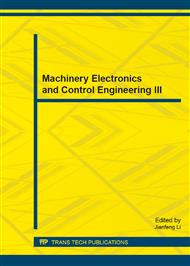p.1060
p.1064
p.1068
p.1072
p.1077
p.1081
p.1085
p.1089
p.1093
Generators Bidding Equilibrium Optimization Models in Economic Dispatch with CO2 Emission Constraints-Model Construction
Abstract:
Power exchange needs to design a mechanism, which can achieve the internalization of environmental costs of power generation enterprises, thus maximizing the social environmental benefits. Two-stage optimization models of energy-saving and emission-reducing for coal-fired power plant are established. In the first stage model, maximums of the social environmental benefits and energy-saving effect are taken as the objective functions with consideration of the unit output constraints, load constraints and emissions constraints, etc. In the second stage model, maximums of power generation enterprises profits are taken as the objective functions with the constraints of KKT conditions of the first stage model. The proposed marginal incentive pricing mechanism not only controlls CO2 emissions from the total amount, but also improves emissions treatment initiative of coal-fired power generation enterprises. A numerical example shows that the proposed model and algorithm can achieve the effect of saving energy, reducing emission and encouraging competition during the process of generation.
Info:
Periodical:
Pages:
1085-1088
Citation:
Online since:
December 2013
Authors:
Price:
Сopyright:
© 2014 Trans Tech Publications Ltd. All Rights Reserved
Share:
Citation:


